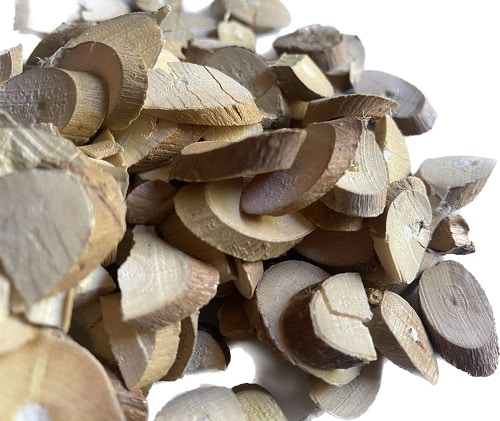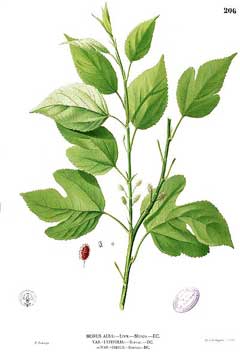White Mulberry Twigs (Cut) – Morus alba – Sang Zhi
£8.00
Cut White Mulberry Twigs
Morus alba
Sometimes known as Common, Spanish or Persian Mulberry and in China, Sang Zhi
50 grams
The White Mulberry (Morus alba) is a species native to Northern China where it is known as Sang Zhi and its cultivation has been so long that it precedes any recorded history of it. It is a short lived tree on which the silkworm feeds. Other species are often confused with it such as the Black Mulberry (Morus nigra) but it is easy to tell from the leaves of the White Mulberry which species it is because it has no hairs on the lower leaf surface whereas the Black Mulberry does.
Its fruit is poisonous when unripe.
Traditional Uses & Constituents for White Mulberry Twigs – Sang Zhi:-
Traditionally Mulberry twigs are used for treating the lungs, liver function and eyesight but Mulberry Leaf is rich in amino acids, vitamin C and is full of antioxidants.
The latest Chinese research has shown Mulberry Leaf is effective in regulating blood fat, balancing blood pressure, reducing blood glucose, and boosting metabolism. It is used for arterial health as result and to reduce blood sugar levels in the help to control diabetes.
Mulberry twig is also considered a wonderful herb for anti-inflammation, anti-aging and all round maintaining health. Many people consider both the fruits and the leaves to be superfood.
It will also act, if applied both topically and taken internally, by decreasing melanin production and lightening pigmentation.
Folklore and Cultural Heritage of White Mulberry Twigs – Sang Zhi:-
Ovid wrote in his book “Metamorphoses” about the reddish purple colouring of Mulberry fruit being due to Pyramus and Thisbee (You may know the names better from Shakespeare’s Midsummer Night’s Dream) committing suicide after a misunderstanding under a Mulberry Tree where their blood splashed the previously white fruit of the tree staining it a dark red – The Gods changed the fruits colour permanenty to honour their forbidden love.
The tree features in the nursery rhyme “Here we go round the Mulberry Bush”
| Country of Origin | UK |
|---|---|
| Batch Code | JF22587946A |
| Harvest | Sep 22 |
| Best Before | Dec 25 |
Related products
-
Agnus Castus Berries-Vitex agnus castus
£4.00 – £18.00 View Product This product has multiple variants. The options may be chosen on the product page -
Barberry Bark Cut – Berberis vulgaris
£8.50 View Product -
Lovage Leaf (cut) – Levisticum officinale
£7.00 View Product -
Pareira Brava Root – Chondrodendron tomentosum
£13.50 View Product





